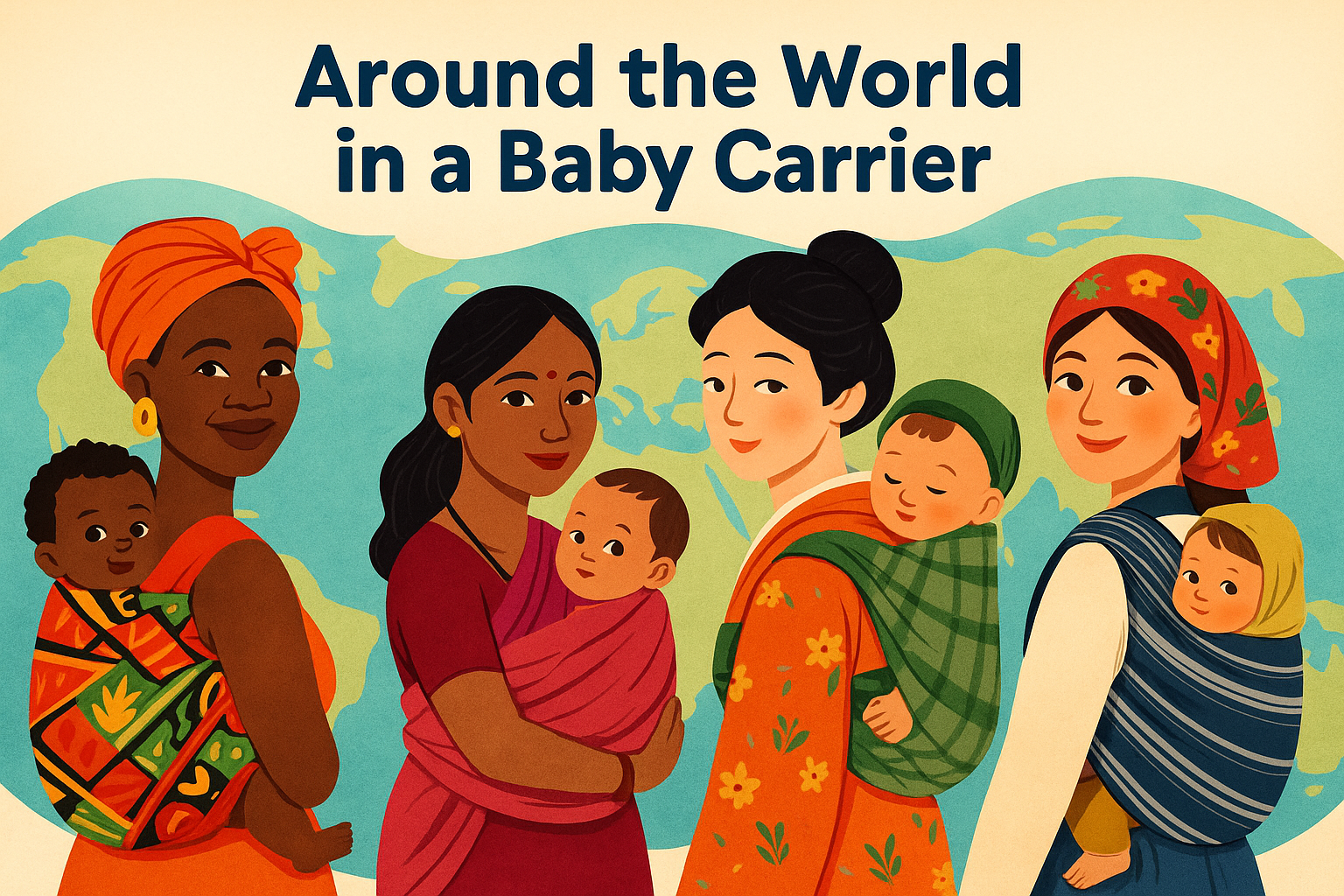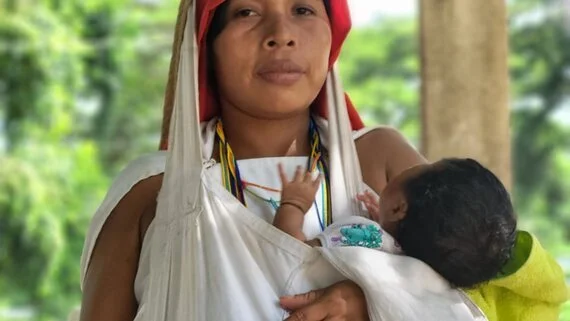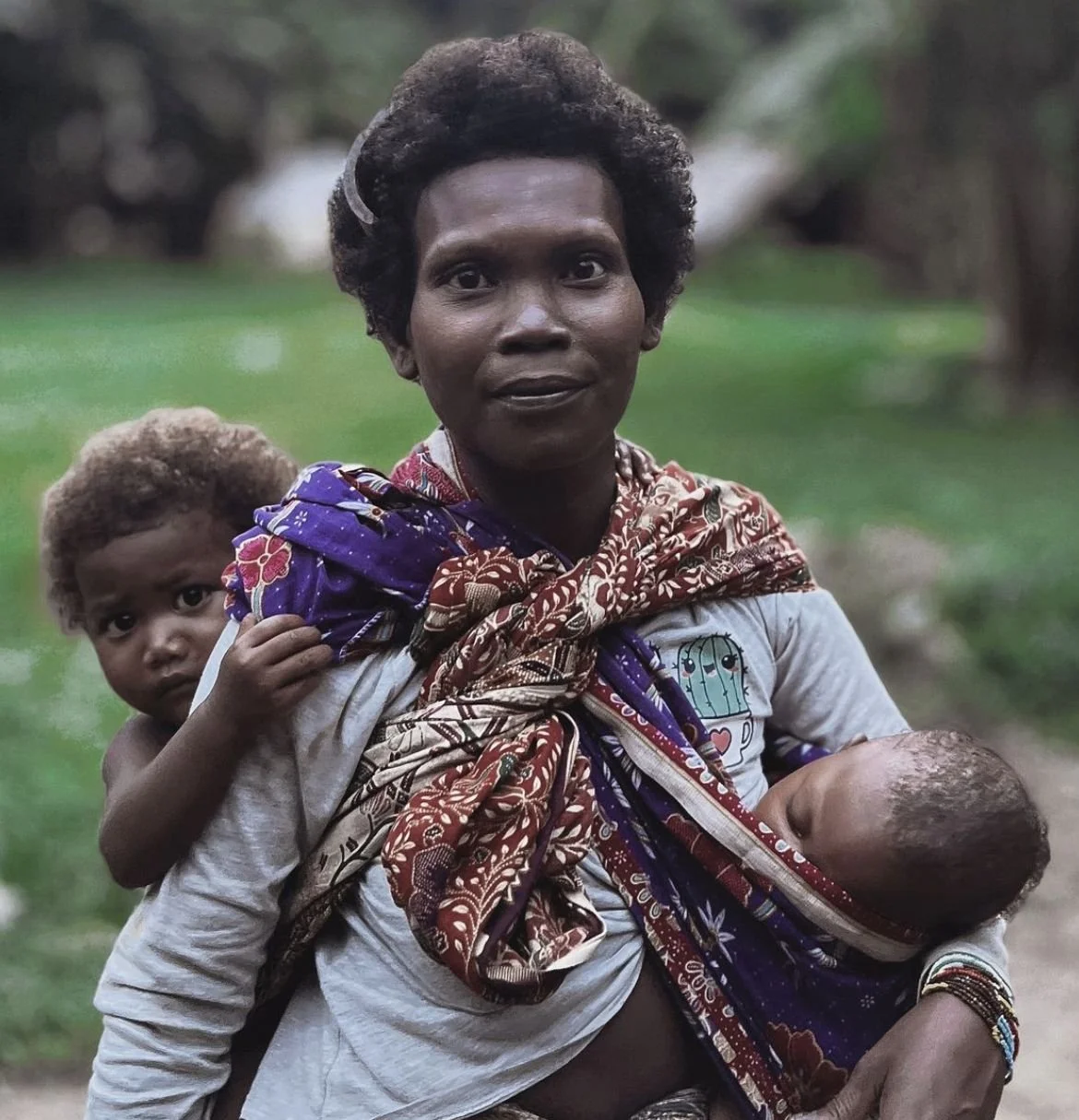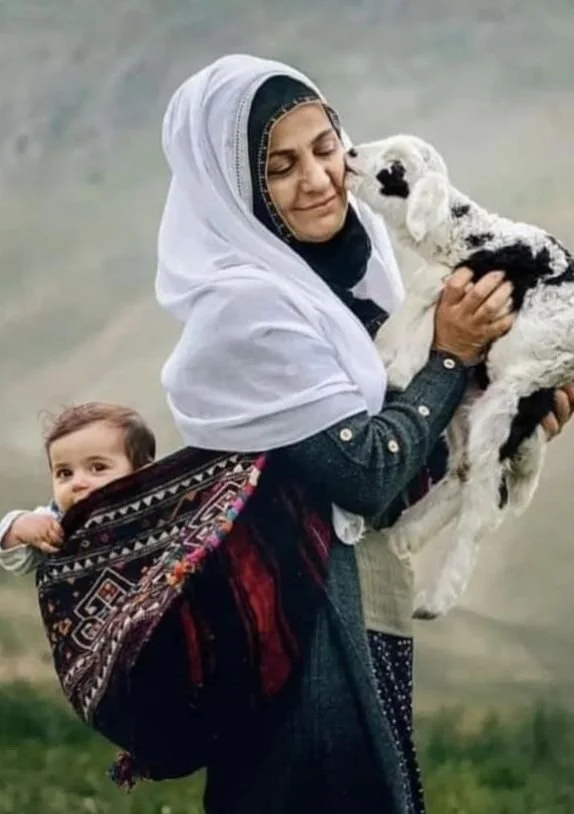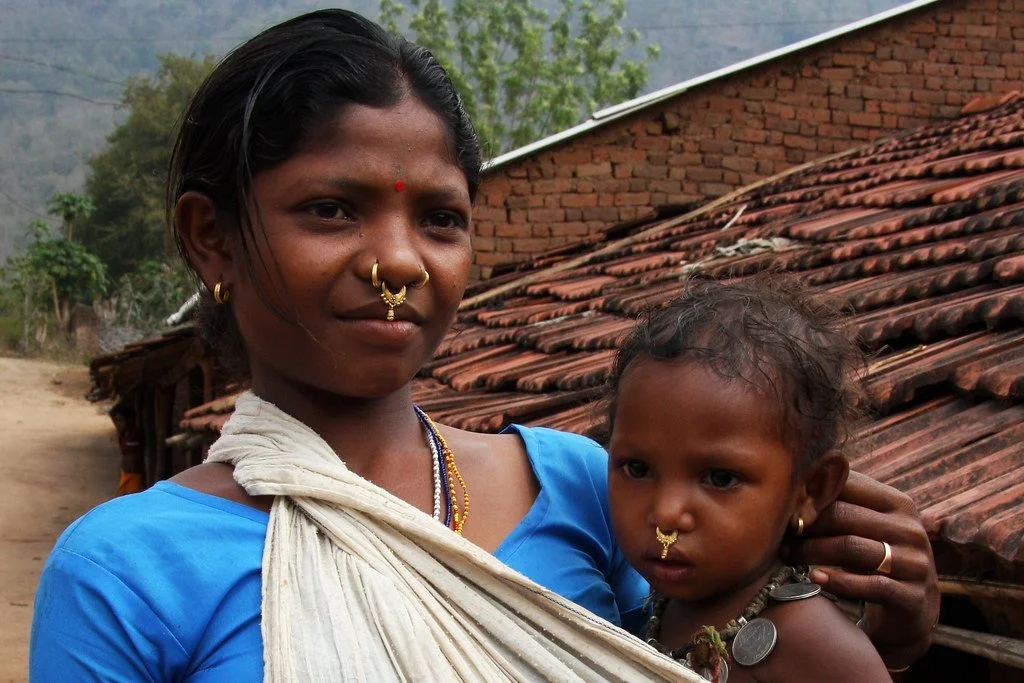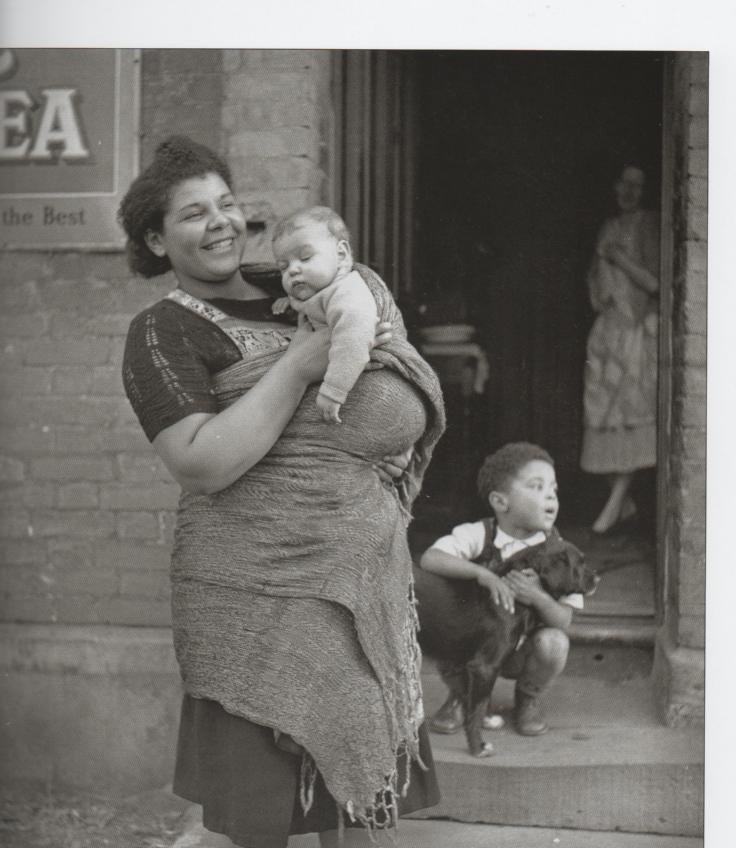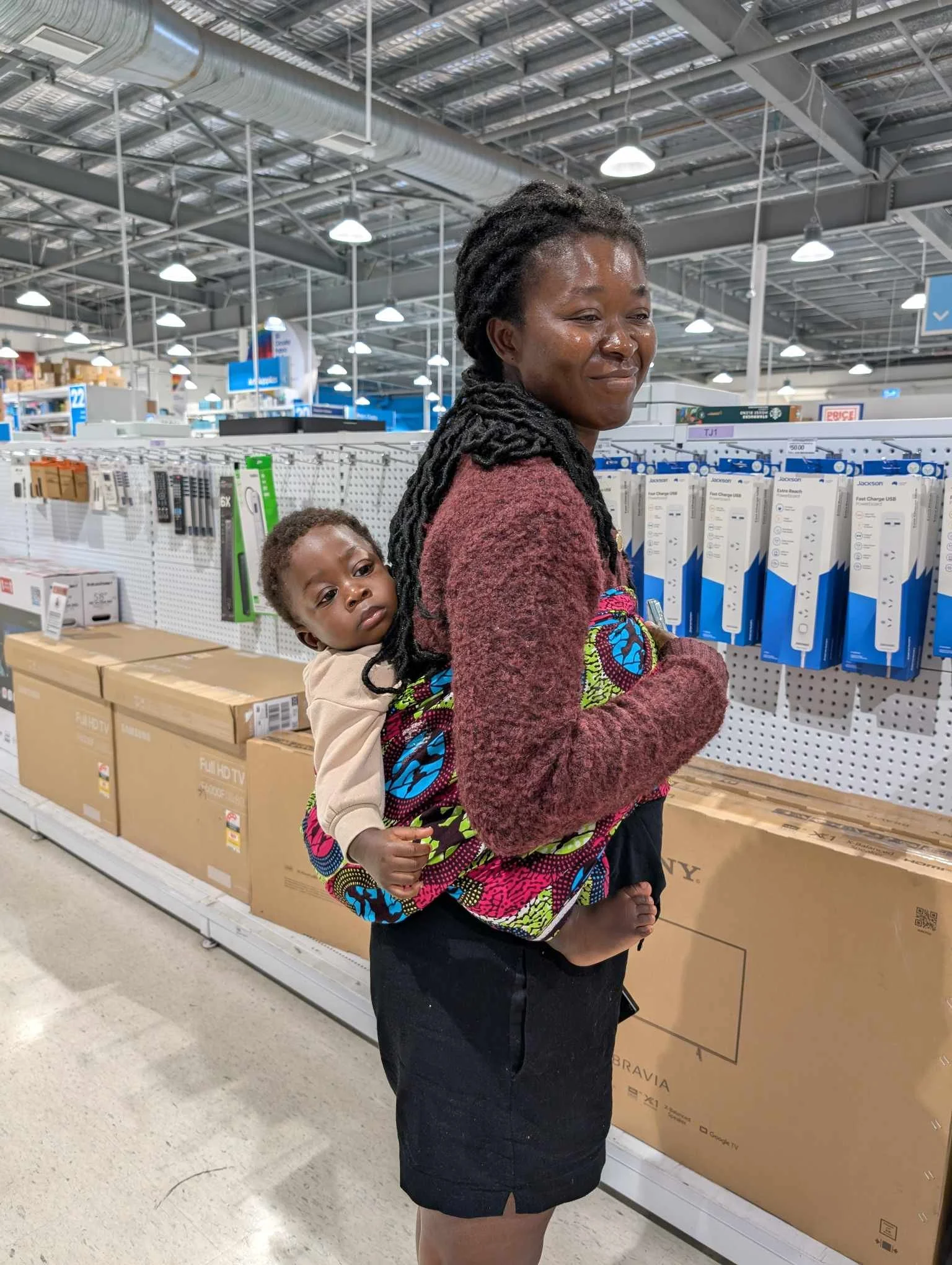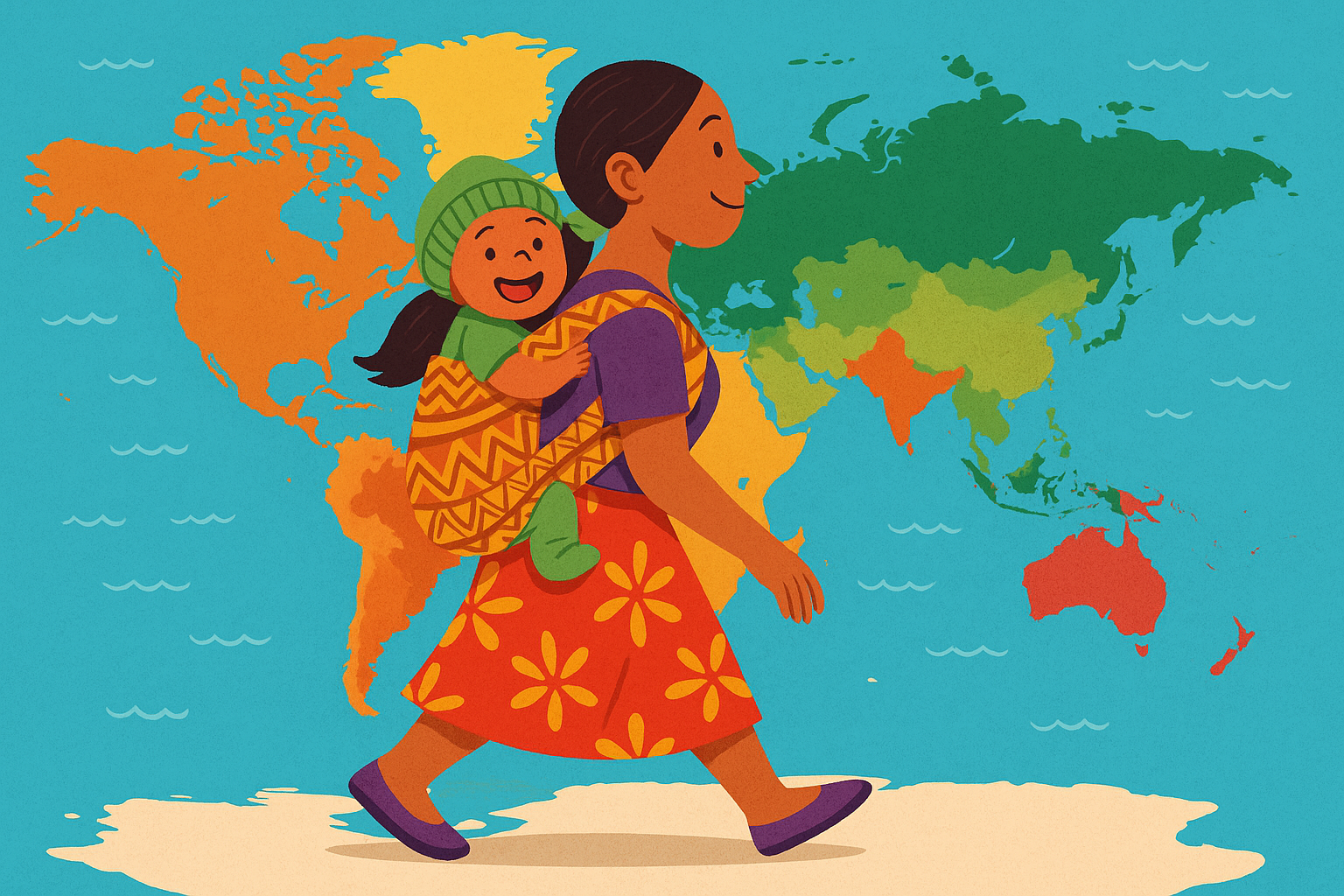Around the World in a Baby Carrier
Look out for our posts each day between August 1 2025 and September 11 2025.
Follow on social media #aroundtheworldinababycarrier or subscribe in Feedly or other RSS feed so you don’t miss a day of our journey!
Welcome to Around the World in a Baby Carrier — a journey across continents, cultures, and generations to witness one of the most universal acts of care: carrying a baby close.
Before bassinets and strollers, before parenting books and baby gadgets, there are arms. Slings. Wraps. Cloths. Shawls. Bark. Wool. Woven grasses. Shaped wood. Whatever can be tied, draped, looped, carved, or knotted becomes a way to carry babies in rhythm with daily life. Whether climbing mountains, walking to market, dancing, working, weaving, farming, praying, or resting — babies are there, held close to heart and body. The form may vary, but the function is the same: to keep a baby safe, nurtured, and connected.
A woman from Colombia, dressed in traditional attire and beaded necklaces, holds her baby in a simple white cloth sling. The baby is upright and close to her chest, with one hand reaching toward her neckline.
All around the world, in every era and society, caregivers move through the world with their babies close to their bodies. It is one of the oldest and most enduring human practices. From cradleboards to rebozos, from bark cloth to batik slings, from knotted wraps to padded meh dai, these carriers are more than just tools. They are threads in the story of our humanity. They are symbols of love, strength, resilience, and continuity.
A mother in Papua New Guinea nurses her baby in a cloth sling while carrying an older child on her back. Both children are snug against her in patterned fabric, held with ease and confidence in the lush green surroundings.
Many Indigenous communities craft carriers from locally sourced wood — cedar, pine, birch, alder, cottonwood, and other timbers suited to their region — forming beautifully carved and functional cradleboards that support a baby's body while allowing caregivers to work or travel with ease. These wooden frames are often padded with moss or fur, adorned with beadwork or paint, and tied with cloth bands or laces. They speak not only of practicality, but of deep care and cultural expression. These practices continue today, in homes, communities, and ceremonies across the globe.
A baby lies in a traditional wooden cradle with geometric carvings, thumb in mouth and half-covered by a quilted cloth. The scene is set in a sunny Central Asian courtyard with older children and a woman in the background.
In cultures with long histories of textile weaving, lengthwise cloths have long played a dual role — both garment and carrier. Woven wraps are used across Europe, Asia, and the Americas, passed from shoulder to back to hip in layers that secure babies upright and snug. Each wrap tells a story — spun on handlooms, dyed with plants, trimmed with family motifs. They are infinitely adaptable, used from infancy through toddlerhood, and still widely embraced today in both rural communities and urban centres.
A Kurdish woman smiles as she holds a lamb in her arms, while her baby rides on her back in a richly patterned woven cloth carrier. The baby peeks out with wide eyes, securely wrapped close against her mother’s back.
Across Central and South America, Africa, and Southeast Asia, everyday cloths — worn as skirts, slings, or headwraps — often double as baby carriers. These unstructured carriers are tied high on the back, across the hip, or occasionally front, allowing the cloth to mould around the caregiver’s body. Sometimes they are knotted tightly; other times they are held in place with tucks, folds, or by wrapping the tail beneath the baby's bottom or around the wearer's torso. Often brightly patterned or embroidered, these cloths reflect local textile traditions and climate. Their strength lies in their simplicity: always at hand, folded and tied in seconds, a fluid part of daily life.
In a busy crowd, a grandmother helps a young mother tie a black-and-white rebozo securely around her shoulder, holding her baby snugly on her back in a traditional Mexican carrying style.
In East and Southeast Asia, various soft structured cloth carriers have evolved — rectangle or square-bodied, often with straps extending from each corner. The meh dai from China, onbuhimo from Japan, and podegi from Korea are among the most recognisable. Tied with broad sashes or narrow straps, they allow secure upright carrying and easy adjustment between wearers. Traditionally hand-stitched from cotton, hemp, or brocade, they remain widely used and have inspired many modern carrier designs.
Cross-body slings are found in many regions where a length of fabric is worn diagonally across the torso, securing the baby in a seated position on the hip or front. The Indonesian selendang is one well-known example, but similar styles are used throughout parts of Africa, Asia, and the Pacific. These carriers may be secured with a simple knot, twisted or tucked fabric, or simply tension and friction alone. They allow quick up-and-down movement, discreet feeding, and are often beautifully woven or printed. Like all forms of babywearing, they reflect local climate, textile traditions, and daily rhythms of care.
A Siberian mother in richly adorned traditional dress sits beside her baby, who sleeps in a fur-lined wooden cradleboard. The scene reflects warmth, heritage, and deep cultural continuity.
This series honours that shared human instinct. We travel region by region, pausing in village lanes, mountain paths, city corners, forest clearings, and riverbanks. We see traditional carriers still in use, some lovingly passed down through generations, others reimagined in new fabrics and forms. We witness modern adaptations that honour ancestral wisdom, reshaped for today’s families. We don't rank or compare. We don't label any one way as best. We simply witness and learn.
An Adivasi mother in rural India stands proudly with her young child resting on her hip, supported by a length of cloth tied over one shoulder. Both wear traditional jewelry, including striking gold nose rings. The clay-tiled rooftops and hillside backdrop root this moment in a village setting, highlighting the continuity of Indigenous caregiving practices.
This project does not aim to catalogue every carrier ever made. Nor does it claim to represent every culture in full. Instead, it offers glimpses — snapshots of babywearing in context. It is a patchwork, lovingly assembled, designed to honour what can be seen and name what has been disrupted or hidden. Sometimes we see the details clearly: the handwoven bands, the intricate knots, the way a baby leans into a grandmother’s heartbeat. Other times, we are left with questions, silences, and a deep respect for what remains undocumented.
Outside a brick terrace in post-war Britain, a mother beams as she holds her sleeping baby close, wrapped snugly in a woven shawl tied around her body. A young boy crouches nearby with a puppy in his arms, while another woman stands in the doorway behind them. This powerful image captures the warmth, resilience, and community of working-class life—and the instinctive closeness of babywearing across generations.
This is a celebration of continuity more than innovation. A reminder that babywearing isn't a trend or a parenting technique — it's part of who we are. It's something that humans have always done, long before the term "babywearing" existed. It belongs to us all. Every form of babywearing is part of living culture — practiced today, adapted today, evolving today. All babywearing is modern babywearing.
A Quechua woman wears a traditional hat and brightly woven shawl as she carries her baby snugly on her back in a manta. The child peeks out in a vibrant red beanie, framed by walls draped in colourful textiles—a scene rich in Andean heritage and warmth.
In each post, you’ll find:
Historical and contemporary images of caregivers from that region
Descriptions of traditional carrier styles and how they’re used
Observations about posture, design, materials, and the role of carriers in family and community life
Reflections on the significance of babywearing in daily life and intergenerational connection
A tone of deep respect for every caregiver and every child
Some posts include reflections on cultural disruption, colonisation, or lost practices. In those places, we approach with care and humility. We acknowledge that babywearing has sometimes been suppressed, erased, or transformed through traumatic histories. Where records are missing, we do not fill the silence with speculation. Instead, we hold space. We listen. And we invite those with ancestral, community, or family knowledge to share what they know. In some cases, we offer an open invitation for photos, memories, or voices to help us better understand the richness of what has been carried and what may still be remembered.
Your voice matters here. If your family has a story, a photo, a tradition, or a memory of carrying that you would like to share, please reach out. This is a living project. Each contribution becomes a thread in the wider fabric we are weaving together. Whether you are a historian, a parent, a midwife, an elder, a babywearing educator, or someone who remembers being carried — you are welcome.
A smiling mother shops with her child carried high on her back in a boldly patterned cloth, wrapped in the traditional kanga or wrapper style. The vibrant fabric contrasts with the modern retail setting, bridging cultural heritage and everyday life.
This journey is not just about looking back. It's about looking around — and recognising each other. It's about standing in awe of our global family and the ingenious, tender, resourceful ways we care for our young. Babywearing may take different forms, but the core is constant: closeness, movement, presence, love.
We hope this series deepens your appreciation for the carriers you use, the ones your ancestors used, and the ones you have yet to discover. Whether you wear your baby in a stretchy wrap, a back-tied cloth, a shoulder sling, a structured buckle carrier, or in your arms alone — you are part of this global rhythm.
So come along.
Let us walk together, baby on hip or back or chest.
Let us see what ties us together.
Let us celebrate the ways we carry love.
Start exploring here → The Birth Of Babywearing
A Note on the Order of This Journey
This series follows a gentle, story-driven path around the world, inspired by the spirit of exploration rather than order or importance. Each culture and carrying tradition is equally honored and valued. The sequence chosen is meant to reflect a narrative flow — weaving together our shared humanity — not a ranking or historical timeline. Thank you for joining this journey with an open heart.
A note of gratitude and respect
We respectfully acknowledge and honor the individuals and communities depicted in historical images throughout this series. Many of these photographs were taken in times and contexts where informed consent as we understand it today was not sought or given, and some may have been created through coercion or exploitation.
We share these images with the deepest gratitude, not to romanticize or objectify, but to recognize and celebrate the strength, resilience, and wisdom of these cultural practices. We hold these ancestors and knowledge holders in our hearts and aim to represent their traditions with integrity, humility, and care.
We commit to continuing to learn, listen, and uplift the voices of contemporary community members and descendants, and we welcome guidance on the respectful sharing of these images.

